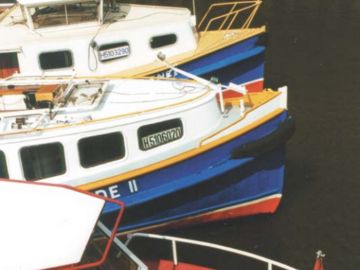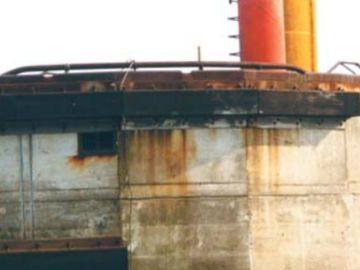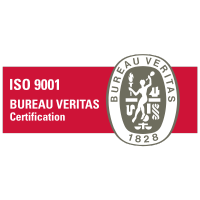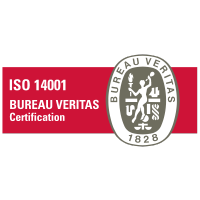Products
Fenders
WILLBRANDT Gummiteknik has been an independent and renowned supplier of fenders, complete fender systems and sealing profiles for ships and harbours for decades. Our experienced specialists take care of planning, drawing, design, and sales and are happy to provide consultancy and installation on site.
Our products are designed and manufactured in compliance with EAU 2004 and PIANC 2002. We specialise in providing products tailored to suit specific needs. All work such as drilling, thread cutting, cutting to size and mitre cuts can be carried out quickly and cost-effectively in our own workshop.
Products
Fenders
WILLBRANDT Gummiteknik has been an independent and renowned supplier of fenders, complete fender systems and sealing profiles for ships and harbours for decades.
Our experienced specialists take care of planning, drawing, design, and sales and are happy to provide consultancy and installation on site.
Our products are designed and manufactured in compliance with EAU 2004 and PIANC 2002. We specialise in providing products tailored to suit specific needs.
All work such as drilling, thread cutting, cutting to size and mitre cuts can be carried out quickly and cost-effectively in our own workshop.
Contact
Contact us for a non-binding visit, where we, together with you and our suppliers, will listen to your needs and offer a suitable solution.
Fenders

Cylindrical fenders
Cylindrical Fenders are the „classics“ among the fenders and are still the most used fender elements. They are available in a wide range of sizes for numerous applications. The fastening and mounting method depends on the size and takes place with bars or chains.
Features
- soft initial deflection
- high final load absorption (progressive characteristic)
- possibility of rolling even under high final load
- rugged, simple design
- high durability
- easy to install (horizontal, vertical, diagonal)
- easy to replace
- versatile applicable
Recommendations for installation of cylindrical fenders
The installation of elastomer fenders without vulcanised steel parts takes place with suitable suspensions.
The suspensions must be capable of absorbing loads occurring in use. In addition to adequate dimensioning, effective corrosion protection ensures a high durability and maintenance-free operation.
There are essentially three types of suspensions
suspension on chains
suspension on chains with bar
suspension with bars in brackets

Square fenders
WILLBRANDT square rubber fenders are robust, low wearing components for absorbing high loads under axial stress (e.g., guide rails). When mounted at water level, excellent sliding characteristics of the wet rubber in conjunction with the spring characteristics combine to provide effective damage protection.
- easy fixing
- hard initial cushioning behaviour
- very high final load absorption
- horizontal, vertical or diagonal installation
Square Fenders are available with round or D-hole. Fastening takes place with steel cables or bolts.
Square Composite Fenders WGVC
Square Composite Fenders combine the deflection characteristics and energy absorption of square fenders and the optimal sliding properties of UHMW-PE.
A special vulcanisation process ensures a reliable bond between the rubber and PE.
Mechanical connection is unnecessary. The complete PE thickness is available as wear protection.
Like the square fender, fixing takes place with bolts.

D-Fenders
WILLBRANDT D-fenders are available with round or D-shaped inner hole in various sizes.
Bolt profiles are available in different cross-sections and sizes.
Both profile types can be used on quay walls as well as directly on the sides of boats. They combine the advantages of round fenders (soft initial spring behaviour) with the advantages of square fenders (resistance against heavy rubbing and high load bearing capacity at the ends).
Suitable for direct fitting or with a U-profile.

Cone-Fenders
Cone Fenders are the most recent development based on many years of experience with fenders.
- maximum deformation up to 72.5 %
- high energy absorption
- low reaction force
- high lateral stiffness (shear direction)
These characteristics are also maintained at berthing angles of <10°.
The mounted frontal panel ensures minimal surface pressure on the ship’s hull and extremely reduced shear forces on the fender.
Direct contact with the elastomer is prevented, which leads to a longer life cycle.
The high performance of Cone Fenders allows the use of less costly smaller fenders.
Due to their geometry, Cone Fenders can incorporate frontal panels without additional weight chains if their weight is less than the weight of the fender.

Arch fenders
Arch Fenders represent the newest generation of arch Fenders that have been optimised for increased energy absorption.
- easy horizontal or vertical installation
- various sizes and lengths
Arch Fenders WGTF-PE are available with vulcanised mounting plate for direct fixing of PE sliding plates or a frontal panel.
Combined with PE sliding plates they ensure a low coefficient of friction.
The standard type is intended for installation without additional attachment parts.

Roller, donut and wheel fenders
Donut Fenders are used for berthing dolphins and guiding and turning structures.
Internal PE sliding strips ensure easy movement on the dolphin.
A closed-cellular foam core provides for additional buoyancy so that the fender rises and falls with the water level (tide) to provide a constantly contact area.
The outer skin is made of polyurethane reinforced with nylon cord. Variable dimensions and a rugged design enable adaptation to suit specific applications.
- high energy absorption
- unsinkable
- bright colours for visibility
- low-maintenance
- non-marking
Wheel or Roller Fenders are used to help ships manoeuvre into narrow channels such as docks or harbour entrances.
The fender body consists of polyurethane or rubber which is either solid or filled with air.
- rotatable
- suitable for use as part of a system (all types)
- low coefficient of friction
- increased energy absorption due to abutment (type B)
- non-marking polyurethane body (type C)
- signal coloured polyurethane body (type C)
- low contact pressure by using large pneumatic fender bodies
- low-maintenance due plastic sliding bearings
Also suitable for hull-integrated installation on river-cruisers.

Floating foam fenders
Floating Foam Fenders are the alternative to pneumatic fenders and rigid fender systems.
- high energy absorption
- low reaction force
- unsinkable, even after damage
- GL certified
- very easy to fit
- tidal harbours
- cruise ship terminals
- naval bases
- ship-to-ship
Different foam densities allow variable performance characteristics with the same fender dimensions.
The fenders can be additionally provided with a tyre-chain net for heavy-duty use.

Pneumatic floating fenders WGPF / WGPF-SUB
Pneumatic Floating Fenders are ideal for temporary and permanent use in harbours and offshore.
They comply with ISO 17357. These fenders consist of high-strength synthetic fabric rubberised on both sides.
- gently rising deflection curve
- very low surface stress with high energy absorption
- additional protection for heavy-duty use with tyre-chain net
- deflection characteristics are maintained even after repeated loading
- No peak loads at berthing angles up to 15° (even load distribution)
Although bulky when used, these fenders are easy to store due to their small pack dimensions.
They are light in relation to their size and can be filled with the usual on-board compressor systems.

Super Circle
Super Circle Fenders have been developed to replace cylindrical fenders.
They are cylindrical with fully embedded steel flanges for fixing to piers and frontal panels.
The further optimised geometry has enabled deflection to be increased to 52.5 %. This improves the energy absorption to reaction force ratio by 15 %.
high energy absorption
rugged design
maximum deformation up to 55 %
Additional weight chains are necessary if the weight of the frontal panel exceeds the weight of the fender body.

Keyhole fenders
Key Hole Fenders are suitable for fendering rounded contours (bow and stern section of tugs, pierheads, and so on) due to the keyhole cut-out.
These compact fenders can be combined to effective and attractive fender shields.
- Features includes
- Light S-shaped spring curve
- Friction contact is fully maintained even at a small angle of incidence
- Easy to install, also on curved surfaces
- Single components are easy to replace

PE-Sliding pad and rails WGPE
PE Sliding pads of PE 1000
PE Sliding Pads of PE 1000 (UHMW-PE = ultra-high molecular weight polyethylene) are extremely hard wearing due to their very high molecular weight (> 3,500,000 g/mol.).
They are very impact resistant and have excellent sliding properties. These sliding pads are the first choice in wear protection and sliding surfaces for fender panels, concrete surfaces, bridges and lock entrances or pontoons.
The pads are manufactured by compression moulding/sintering.
UHMW-PE is also available with the admixture of reclaimed PE, whereby to be noted is a slight reduction in the respective physical properties. In this case a relevant cost saving is being opposite to a little less performance characteristic.
UHMW-PE is rot-proof, UV, weathering and seawater resistant.
This allows easy adaptation to the specific installation situation, also on site, without the need for expensive machines.
Sliding pads are mounted using bolts.
PE sliding rails of PE 300
PE Sliding Rails of PE 300 (HD-PE = high density polyethylene) have a lower molecular weight (about 200.000 g/mol.).
These sliding strips are suitable for welding but have reduced sliding properties and are less wear resistant.
They are predominantly rectangular extruded profiles in lengths of up to 6500 mm (die dependent).

Fender plates WGFP
Fender Plates consits of rubber with a vulcanised internal steel plate.
The compact design allows a small distance to be maintained between ship and quay.

Accessories
Chains and associated fixings are used for fastening fenders, absorbing the weight forces of fender panels, and diverting lever forces.
The individual components must be adapted to suit the specific application. All chains and accessories are protected against corrosion by hot-dip galvanising as standard. Specific parts are made of stainless steel.
Chains
Round Link Chains are available in different strength categories
Cast-in anchors
Cast-in Anchors are used for suspensions on surfaces to be concreted. They consist of a threaded sleeve and an anchor rod with welded base plate.
U-anchor
U-Anchors are imbedded in concrete to fix fenders with chains.
Chemical anchors
Chemical Anchors are used for fastening fender suspensions to existing concrete surfaces. This is an expansion pressure free anchoring system for fixing in non-cracked concrete. Holes are reliably sealed by embedding the anchor rod in the thermosetting resin. Up to M30, appropriate 2-component mortar cartridges are available.
For threads larger than M30, the use of injection mortar in cartridges is recommended.
Products

Square fenders
WILLBRANDT square rubber fenders are robust, low wearing components for absorbing high loads under axial stress (e.g., guide rails). When mounted at water level, excellent sliding characteristics of the wet rubber in conjunction with the spring characteristics combine to provide effective damage protection.
- easy fixing
- hard initial cushioning behaviour
- very high final load absorption
- horizontal, vertical or diagonal installation
Square Fenders are available with round or D-hole. Fastening takes place with steel cables or bolts.
Square Composite Fenders WGVC
Square Composite Fenders combine the deflection characteristics and energy absorption of square fenders and the optimal sliding properties of UHMW-PE.
A special vulcanisation process ensures a reliable bond between the rubber and PE.
Mechanical connection is unnecessary. The complete PE thickness is available as wear protection.
Like the square fender, fixing takes place with bolts.

Square fenders
WILLBRANDT square rubber fenders are robust, low wearing components for absorbing high loads under axial stress (e.g., guide rails). When mounted at water level, excellent sliding characteristics of the wet rubber in conjunction with the spring characteristics combine to provide effective damage protection.
- easy fixing
- hard initial cushioning behaviour
- very high final load absorption
- horizontal, vertical or diagonal installation
Square Fenders are available with round or D-hole. Fastening takes place with steel cables or bolts.
Square Composite Fenders WGVC
Square Composite Fenders combine the deflection characteristics and energy absorption of square fenders and the optimal sliding properties of UHMW-PE.
A special vulcanisation process ensures a reliable bond between the rubber and PE.
Mechanical connection is unnecessary. The complete PE thickness is available as wear protection.
Like the square fender, fixing takes place with bolts.

D-Fenders
WILLBRANDT D-fenders are available with round or D-shaped inner hole in various sizes.
Bolt profiles are available in different cross-sections and sizes.
Both profile types can be used on quay walls as well as directly on the sides of boats. They combine the advantages of round fenders (soft initial spring behaviour) with the advantages of square fenders (resistance against heavy rubbing and high load bearing capacity at the ends).
Suitable for direct fitting or with a U-profile.

Cone-Fenders
Cone Fenders are the most recent development based on many years of experience with fenders.
- maximum deformation up to 72.5 %
- high energy absorption
- low reaction force
- high lateral stiffness (shear direction)
These characteristics are also maintained at berthing angles of <10°.
The mounted frontal panel ensures minimal surface pressure on the ship’s hull and extremely reduced shear forces on the fender.
Direct contact with the elastomer is prevented, which leads to a longer life cycle.
The high performance of Cone Fenders allows the use of less costly smaller fenders.
Due to their geometry, Cone Fenders can incorporate frontal panels without additional weight chains if their weight is less than the weight of the fender.

Arch fenders
Arch Fenders represent the newest generation of arch Fenders that have been optimised for increased energy absorption.
- easy horizontal or vertical installation
- various sizes and lengths
Arch Fenders WGTF-PE are available with vulcanised mounting plate for direct fixing of PE sliding plates or a frontal panel.
Combined with PE sliding plates they ensure a low coefficient of friction.
The standard type is intended for installation without additional attachment parts.

Roller, donut and wheel fenders
Donut Fenders are used for berthing dolphins and guiding and turning structures.
Internal PE sliding strips ensure easy movement on the dolphin.
A closed-cellular foam core provides for additional buoyancy so that the fender rises and falls with the water level (tide) to provide a constantly contact area.
The outer skin is made of polyurethane reinforced with nylon cord. Variable dimensions and a rugged design enable adaptation to suit specific applications.
- high energy absorption
- unsinkable
- bright colours for visibility
- low-maintenance
- non-marking
Wheel or Roller Fenders are used to help ships manoeuvre into narrow channels such as docks or harbour entrances.
The fender body consists of polyurethane or rubber which is either solid or filled with air.
- rotatable
- suitable for use as part of a system (all types)
- low coefficient of friction
- increased energy absorption due to abutment (type B)
- non-marking polyurethane body (type C)
- signal coloured polyurethane body (type C)
- low contact pressure by using large pneumatic fender bodies
- low-maintenance due plastic sliding bearings
Also suitable for hull-integrated installation on river-cruisers.

Floating foam fenders
Floating Foam Fenders are the alternative to pneumatic fenders and rigid fender systems.
- high energy absorption
- low reaction force
- unsinkable, even after damage
- GL certified
- very easy to fit
- tidal harbours
- cruise ship terminals
- naval bases
- ship-to-ship
Different foam densities allow variable performance characteristics with the same fender dimensions.
The fenders can be additionally provided with a tyre-chain net for heavy-duty use.

Pneumatic floating fenders WGPF / WGPF-SUB
Pneumatic Floating Fenders are ideal for temporary and permanent use in harbours and offshore.
They comply with ISO 17357. These fenders consist of high-strength synthetic fabric rubberised on both sides.
- gently rising deflection curve
- very low surface stress with high energy absorption
- additional protection for heavy-duty use with tyre-chain net
- deflection characteristics are maintained even after repeated loading
- No peak loads at berthing angles up to 15° (even load distribution)
Although bulky when used, these fenders are easy to store due to their small pack dimensions.
They are light in relation to their size and can be filled with the usual on-board compressor systems.

Super Circle
Super Circle Fenders have been developed to replace cylindrical fenders.
They are cylindrical with fully embedded steel flanges for fixing to piers and frontal panels.
The further optimised geometry has enabled deflection to be increased to 52.5 %. This improves the energy absorption to reaction force ratio by 15 %.
high energy absorption
rugged design
maximum deformation up to 55 %
Additional weight chains are necessary if the weight of the frontal panel exceeds the weight of the fender body.

Keyhole fenders
Key Hole Fenders are suitable for fendering rounded contours (bow and stern section of tugs, pierheads, and so on) due to the keyhole cut-out.
These compact fenders can be combined to effective and attractive fender shields.
- Features includes
- Light S-shaped spring curve
- Friction contact is fully maintained even at a small angle of incidence
- Easy to install, also on curved surfaces
- Single components are easy to replace

PE-Sliding pad and rails WGPE
PE Sliding pads of PE 1000
PE Sliding Pads of PE 1000 (UHMW-PE = ultra-high molecular weight polyethylene) are extremely hard wearing due to their very high molecular weight (> 3,500,000 g/mol.).
They are very impact resistant and have excellent sliding properties. These sliding pads are the first choice in wear protection and sliding surfaces for fender panels, concrete surfaces, bridges and lock entrances or pontoons.
The pads are manufactured by compression moulding/sintering.
UHMW-PE is also available with the admixture of reclaimed PE, whereby to be noted is a slight reduction in the respective physical properties. In this case a relevant cost saving is being opposite to a little less performance characteristic.
UHMW-PE is rot-proof, UV, weathering and seawater resistant.
This allows easy adaptation to the specific installation situation, also on site, without the need for expensive machines.
Sliding pads are mounted using bolts.
PE sliding rails of PE 300
PE Sliding Rails of PE 300 (HD-PE = high density polyethylene) have a lower molecular weight (about 200.000 g/mol.).
These sliding strips are suitable for welding but have reduced sliding properties and are less wear resistant.
They are predominantly rectangular extruded profiles in lengths of up to 6500 mm (die dependent).

Fender plates WGFP
Fender Plates consits of rubber with a vulcanised internal steel plate.
The compact design allows a small distance to be maintained between ship and quay.

Accessories
Chains and associated fixings are used for fastening fenders, absorbing the weight forces of fender panels, and diverting lever forces.
The individual components must be adapted to suit the specific application. All chains and accessories are protected against corrosion by hot-dip galvanising as standard. Specific parts are made of stainless steel.
Chains
Round Link Chains are available in different strength categories
Cast-in anchor
Cast-in Anchors are used for suspensions on surfaces to be concreted.
They consist of a threaded sleeve and an anchor rod with welded base plate.
U-anchors
U-Anchors are imbedded in concrete to fix fenders with chains.
Chemical anchors
Chemical Anchors are used for fastening fender suspensions to existing concrete surfaces. This is an expansion pressure free anchoring system for fixing in non-cracked concrete. Holes are reliably sealed by embedding the anchor rod in the thermosetting resin. Up to M30, appropriate 2-component mortar cartridges are available.
For threads larger than M30, the use of injection mortar in cartridges is recommended.
Contact
Contact us for a non-binding visit, where we, together with you and our suppliers, will listen to your needs and offer a suitable solution.
Request a callback
Fill in the contact details and we will call you back as soon as possible within our opening hours.
Brochures
Read our many brochures online.
You can also order our brochures sent to you as a PDF via email or as a physical brochure sent by mail.








